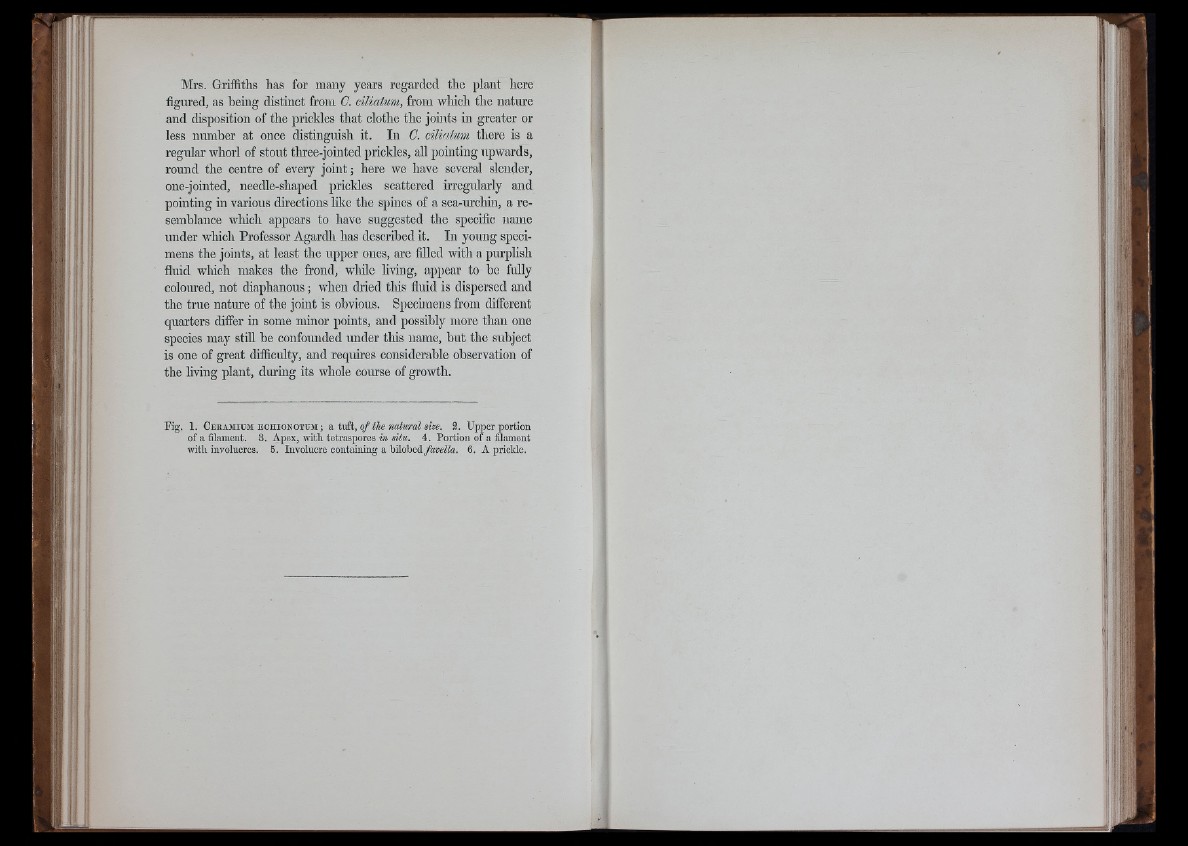
Mrs. Griffiths has for many years regarded the plant here
figiu'cd, as being distinct from C. ciliatum, from which the nature
and disposition of the prickles that clothe the joints in greater or
less number at once distinguish it. In C. cilirdum there is a
regular whorl of stout tlrree-jointed prickles, all pointing upwards,
round the centre of every joint; here we have several slender,
one-jointed, needle-shaped pricldes scattered irregularly and
pointing in various directions lilce the spines of a sea-rachin, a resemblance
which appears to have suggested the specific name
under which Professor Agardh has described it. In young specimens
the joints, at least the upper ones, are filled with a purplish
fluid which makes the frond, while living, appear to be fidly
coloiu-ed, not diaphanous; when dried this fluid is dispersed and
the true nature of the joint is obvious. Specimens from different
quarters differ in some minor points, and possibly more than one
species may still be confounded imder this name, but the subject
is one of great difficulty, and requires considerable observation of
the living plant, dming its whole course of growth.
Fig. 1. Ce eamium ECHIONOTUM; a ItA , o f the natural áze. 3. Upper portion
of a filament. 3. Apex, with tetraspores in situ. 4. Portion of a filament
with involucres. 5. Involucre contaming a büohed favella. 6. A prickle.